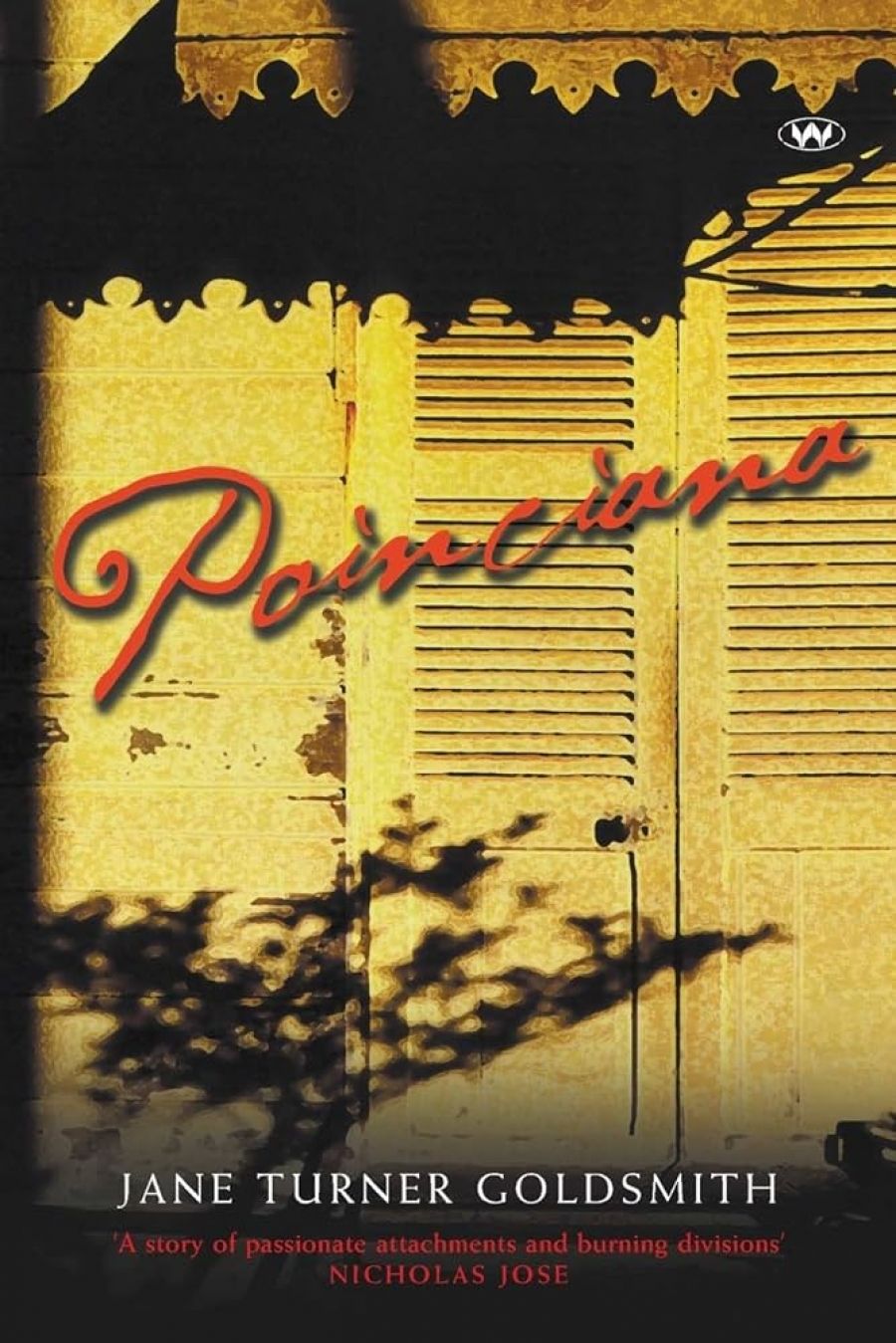
- Free Article: No
- Contents Category: Fiction
- Review Article: Yes
- Online Only: No
- Custom Highlight Text:
South Australian publishers Wakefield Press claim on their website: ‘We love good stories and make beautiful books.’ Poinciana has narrative potential, but is undermined by weak characterisation and unpredictable changes in time and narrative. What makes it a ‘beautiful book’, though, is its exotic backdrop of New Caledonia and its depictions of the landscape, including the brilliant red-flowered tree, the Poinciana.
- Book 1 Title: Poinciana
- Book 1 Biblio: Wakefield Press, $24.95 pb, 216 pp
- Book 1 Cover Small (400 x 600):

- Book 1 Cover (800 x 1200):

Her mother’s deathbed revelation sends Catherine Piron to Noumea to search for the father she thought was dead. Her first contact, journalist Henri Boulez, tells her that writ-ten records are unreliable; she will learn more from talking to locals. Coincidentally, Boulez is heading into the remote regions of the country where her father was last seen, and she accompanies him. Juxtaposed with this narrative is the story of Robert, a mixed-race orphan growing up in New Caledonia during the 1980s, a period of localised political instability.
The reader is left to ponder how these stories connect. When all is revealed, it seems implausible. There are too many coincidences in the plot for it to remain realistic. Catherine’s character is inhibited and lacks full emotional range. As a result, it is hard for readers to champion her cause or to remain interested in her story. Henri is more mysterious; he is gruff, dismissive and not particularly likeable. This is Jane Turner Goldsmith’s first novel, and she has chosen to write about what she knows (she lived in New Caledonia in the late 1980s). Her knowledge of the country’s history is formidable; unfortunately, it comes out in didactic bursts that interrupt the pace of narrative rather than allowing the characters to tell their story.


Comments powered by CComment